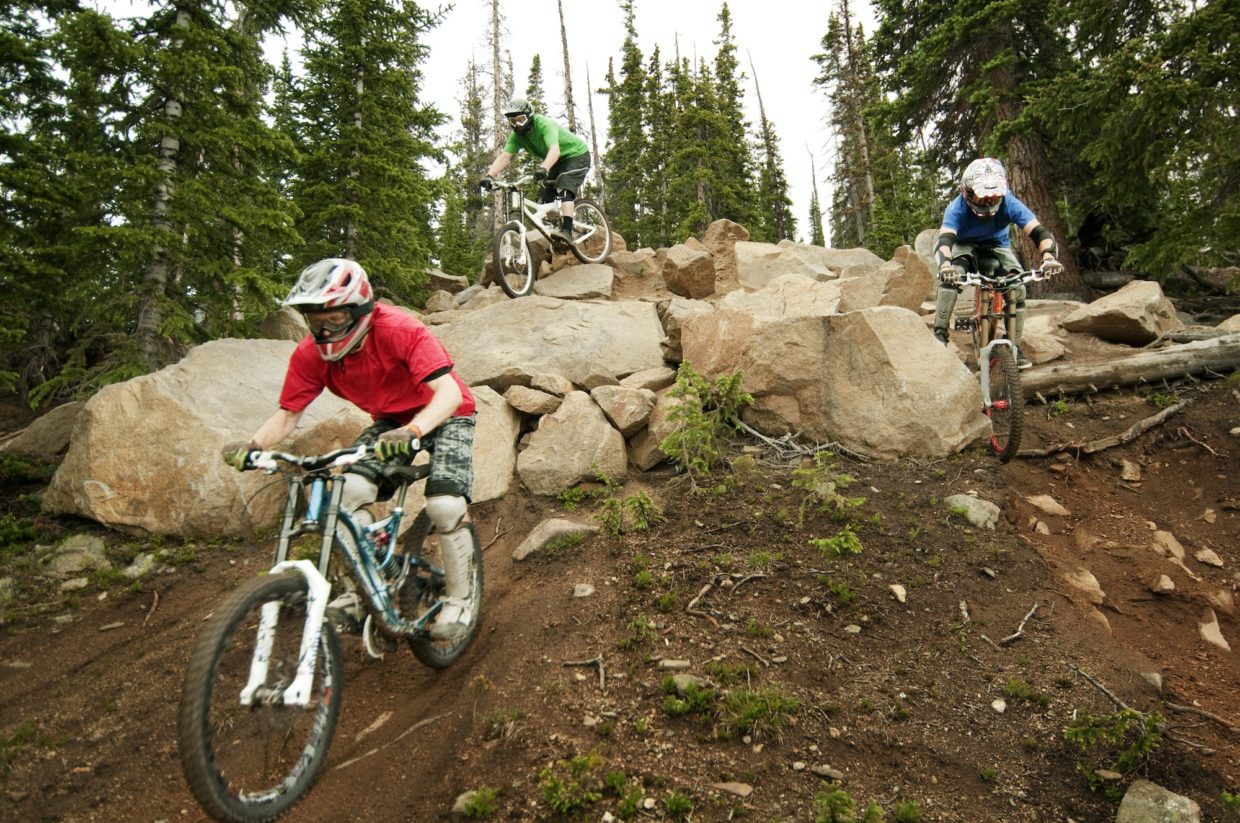I am going to try and explain what to look for when looking to purchase a downhill bike, a bike park bike or both.
Downhill Bikes: Purpose and Characteristics
Downhill bikes usually have 7 to 8 inches of travel with a dual crown fork. They are the perfect machine for the gnarliest stuff you will ride. Having an extremely slack head angle will have this thing wanting to go straight down, giving a lot of confidence and comfort.
The catch? It will be almost impossible to pedal uphill, and anything that isn’t straight down and gnarly will be hard to keep speed with such a big bike.
So in the bike park, a full downhill bike might be overkill. But there are good reasons still to get a downhill bike.
Why Get a Downhill Bike?
There is a reason World Cup races aren’t done on long travel trail bikes. When working with suspension and performance on a particular field of stability and speed on technical and steep tracks, downhill bikes are the bees knees.
If racing is your thing or something you want to do, my advice is to find a bike that you like the look of as far as the riders’ display of the bike in races for performance (can mistake a win) as well, of course, price and really which one you like.
How Price Impacts Performance
I will try to explain a downhill bike for you easily: the more money you spend, the better the bike will be—in every way. Weight, suspension, components, sizing, and durability. Many bike brands will offer their downhill frame in different builds due to price. All of this should be taken into account when you figure out what you’re going for. The highest-end downhill bikes will have high and low compression and rebound on the suspension side, usually carbon or very occasionally aluminum in prototype bikes. You’re going to have amazing components and a lighter weight on all parts, usually being stronger as well.
You do not need the top bike to race well. When starting racing, you can look at a frame you really like and get a lower end of that model that will not have all the bells and whistles but will be perfect for you. This goes as well for bike park downhill rigs. You don’t need to be working on suspension but just have a bike that is almost bombproof, as that’s what a bike park takes—bike parks are a bike punisher.
So racing and riding the gnarly stuff all the time at the bike park will validate a downhill rig.
Long Travel Trail and Enduro Bikes: The Popular Alternative
There is a more popular way to go in most bike parks, and that is a long travel trail or enduro bike. You will be able to pedal a lot easier and have use for it on the trails and not just at the park. These bikes usually have almost the same travel but will be better in the tight stuff, and if you’re not just riding the pro line at your park, the big travel trail rig is a perfect way to go. Downhill will be overkill.
Suspension Linkage: What to Look For
When looking at a frame, you want to have a well-known linkage in suspension. VPP, 5-pivot, and four-bar are the most used. Some companies have really gone above and beyond to help the suspension work well with pivots all over to make the rear wheel work through the travel the best. But still, a four-bar design, which is very simple, can win races. It’s all been shown and continues to be noticed that you can play a lot with linkage, but it really comes down to the rider. With a big travel trail bike, you want to find the same idea—something you like the feel or look of. The suspension will be better and worse in some places, but generally the big bike brands have designs that will work amazing. And if you’re not counting hundredths of seconds, it is pretty much the same.
Component Tiers: Matching Budget to Goals
- A good frame with well-priced parts is great for light racing and bike park usage.
- A good frame with high-priced parts is for top-end racing and will get beaten up in a bike park.
- A good big travel trail bike will take gnarly stuff well with a little give but can be much more mobile on trails and can still handle a bike park. Price and quality of parts will deck it out or allow you to just keep riding day after day.
Forks: Adjustability and Maintenance
Components: Aluminum vs. Carbon
Final Considerations: Choosing the Right Bike for You
If downhill is something you want to get into—whether for lift-assisted park days or racing—think of what it will be used for, how often you’ll ride it, and your personal style. Consider the pros and cons: pedaling ability, big-hit capability, agility, personal feel, and price range. There is no one perfect bike for every park or race, so decide what matters most and justify your spend.

